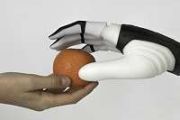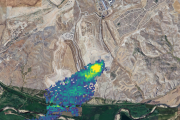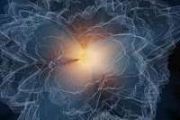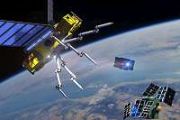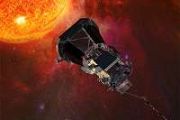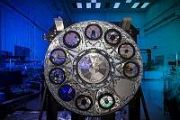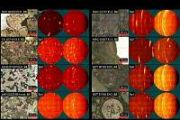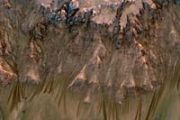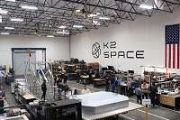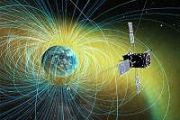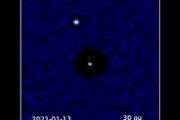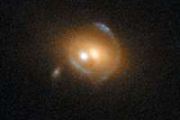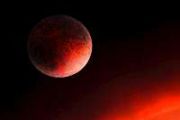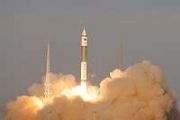
Copernical Team
Microscopy study in Earths harsh environments informs alien life search
 Body Text: Researchers at Portland State University have demonstrated that signs of microbial life can be consistently detected across a variety of Earth's most extreme habitats, findings that may shape future extraterrestrial life detection strategies. The team used digital holographic microscopy (DHM) to study samples in situ from remote locations, including deserts, Arctic regions, and alkali
Body Text: Researchers at Portland State University have demonstrated that signs of microbial life can be consistently detected across a variety of Earth's most extreme habitats, findings that may shape future extraterrestrial life detection strategies. The team used digital holographic microscopy (DHM) to study samples in situ from remote locations, including deserts, Arctic regions, and alkali In the quest for alien life, even empty results hold value
 What if future planetary surveys yield no evidence of life beyond Earth? A research team led by physicist Dr. Daniel Angerhausen from ETH Zurich's Exoplanets and Habitability Group, working in collaboration with the SETI Institute, has explored this very possibility. Their new study, published in The Astronomical Journal under the Swiss National Centre of Competence in Research PlanetS, uses Bay
What if future planetary surveys yield no evidence of life beyond Earth? A research team led by physicist Dr. Daniel Angerhausen from ETH Zurich's Exoplanets and Habitability Group, working in collaboration with the SETI Institute, has explored this very possibility. Their new study, published in The Astronomical Journal under the Swiss National Centre of Competence in Research PlanetS, uses Bay What null results in the search for life could still reveal
 BODY TEXT: What if, after decades of scanning the cosmos with cutting-edge telescopes, we still detect no signs of extraterrestrial life? A new study led by researchers at ETH Zurich, including SETI Institute affiliate Dr. Daniel Angerhausen, explores this possibility and argues that such null results can still offer profound insights. Using Bayesian statistical methods, the researchers aimed to
BODY TEXT: What if, after decades of scanning the cosmos with cutting-edge telescopes, we still detect no signs of extraterrestrial life? A new study led by researchers at ETH Zurich, including SETI Institute affiliate Dr. Daniel Angerhausen, explores this possibility and argues that such null results can still offer profound insights. Using Bayesian statistical methods, the researchers aimed to Redwire and ispace-US forge partnership to pursue lunar mission contracts
 Redwire Corporation (NYSE: RDW), a prominent developer of space infrastructure, has entered into a strategic memorandum of understanding with ispace technologies-U.S., inc. (ispace-U.S.), an American company focused on cis-lunar transportation and infrastructure, to jointly pursue commercial lunar exploration and scientific missions. The announcement was made during the 40th Space Symposium.
Redwire Corporation (NYSE: RDW), a prominent developer of space infrastructure, has entered into a strategic memorandum of understanding with ispace technologies-U.S., inc. (ispace-U.S.), an American company focused on cis-lunar transportation and infrastructure, to jointly pursue commercial lunar exploration and scientific missions. The announcement was made during the 40th Space Symposium. NASA Webb Telescope Sizes Up Small Asteroid with Big Implications
 NASA's James Webb Space Telescope has provided critical new data on asteroid 2024 YR4, confirming that this near-Earth object poses no significant risk of impact in 2032 or the foreseeable future.
The Webb Director's Discretionary Time program enabled principal investigator Andy Rivkin of the Johns Hopkins University Applied Physics Laboratory to gather a comprehensive dataset on the aster
NASA's James Webb Space Telescope has provided critical new data on asteroid 2024 YR4, confirming that this near-Earth object poses no significant risk of impact in 2032 or the foreseeable future.
The Webb Director's Discretionary Time program enabled principal investigator Andy Rivkin of the Johns Hopkins University Applied Physics Laboratory to gather a comprehensive dataset on the aster Life rebounded quickly after dinosaur-killing impact
 Roughly 66 million years ago, a colossal asteroid collided with Earth, triggering the mass extinction of the non-avian dinosaurs and wiping out approximately 70% of marine species. But new research reveals that the aftermath at ground zero, now the Chicxulub Crater in the Gulf of Mexico, became a surprising haven for life.
According to a study published in Nature Communications, the impact
Roughly 66 million years ago, a colossal asteroid collided with Earth, triggering the mass extinction of the non-avian dinosaurs and wiping out approximately 70% of marine species. But new research reveals that the aftermath at ground zero, now the Chicxulub Crater in the Gulf of Mexico, became a surprising haven for life.
According to a study published in Nature Communications, the impact Differences in lunar space weathering revealed by farside samples
 This study, led by Dr. XIAN Haiyang and Dr. ZHU Jianxi from the Guangzhou Institute of Geochemistry under the Chinese Academy of Sciences, presents groundbreaking findings from the Chang'e-6 lunar mission. On June 25, 2024, Chang'e-6 achieved the first successful return of samples from the Moon's farside. Following earlier contributions to the Chang'e-5 program, Dr. Xian was selected in August 2
This study, led by Dr. XIAN Haiyang and Dr. ZHU Jianxi from the Guangzhou Institute of Geochemistry under the Chinese Academy of Sciences, presents groundbreaking findings from the Chang'e-6 lunar mission. On June 25, 2024, Chang'e-6 achieved the first successful return of samples from the Moon's farside. Following earlier contributions to the Chang'e-5 program, Dr. Xian was selected in August 2 A step closer to Martian habitability as lichens endure simulated surface conditions
 In a breakthrough experiment, scientists have demonstrated that some species of lichens can survive conditions that mimic those on Mars, including intense ionizing radiation, while continuing to function metabolically.
The research, published in IMA Fungus, offers compelling evidence that lichens could potentially endure the extreme surface environment of Mars. This finding challenges long
In a breakthrough experiment, scientists have demonstrated that some species of lichens can survive conditions that mimic those on Mars, including intense ionizing radiation, while continuing to function metabolically.
The research, published in IMA Fungus, offers compelling evidence that lichens could potentially endure the extreme surface environment of Mars. This finding challenges long Amazon satellite launch scrubbed due to weather
 Weather prevented a rocket carrying the first batch of Amazon satellites designed to compete with Elon Musk's Starlink from lifting off Wednesday, in a setback for the planned Project Kuiper network.
"Stubborn cumulus clouds and persistent winds make liftoff not possible within the available window," read a liveblog update from operator United Launch Alliance (ULA), a joint venture between B
Weather prevented a rocket carrying the first batch of Amazon satellites designed to compete with Elon Musk's Starlink from lifting off Wednesday, in a setback for the planned Project Kuiper network.
"Stubborn cumulus clouds and persistent winds make liftoff not possible within the available window," read a liveblog update from operator United Launch Alliance (ULA), a joint venture between B Trump's NASA chief pick says will 'prioritize' Mars mission
 NASA will prioritize sending astronauts to Mars, President Donald Trump's pick to lead the US space agency said Wednesday, shifting focus beyond a long-planned return to the Moon - but insisting both were achievable.
Though NASA's "Artemis" Moon mission was announced in Trump's first term, he has since openly mused about heading straight to Mars, prompting concerns that China or others coul
NASA will prioritize sending astronauts to Mars, President Donald Trump's pick to lead the US space agency said Wednesday, shifting focus beyond a long-planned return to the Moon - but insisting both were achievable.
Though NASA's "Artemis" Moon mission was announced in Trump's first term, he has since openly mused about heading straight to Mars, prompting concerns that China or others coul 








